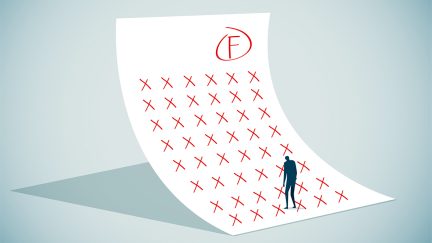Never miss a story — sign up for PLANADVISER newsletters to keep up on the latest retirement plan adviser news.
Advising Women to Take More Investing Risk
The reason why many women are more risk averse with investments than men is primarily due to income uncertainty, says Rui Yao, associate professor at the University of Missouri in Columbia, Missouri.
“The reason why men and women expect uncertain income is different,” she says. “Women are more likely to be caregivers to their parents or to raise children. Men are more likely to choose occupations with income uncertainty built in, such as becoming a car salesman. We found that income uncertainty reduced women’s willingness to take on risk—but that it increases men’s willingness to increase risk.”
More conservative portfolios can result in women not being adequately prepared for retirement, Yao says. This is particularly true for single women, who are less risk tolerant than single men or married couples, she says. Thus, Yao suggests that advisers ask their female clients if they expect to leave the workforce in order to look after their parents or raise a family. If that is the case, then, perhaps, a more conservative portfolio makes sense. However, if that is not the case, “then, advisers should say that the latest research shows that men and women don’t really differ in their need to take investment risk. Further, they should point out that women live longer and really need to take on a riskier portfolio allocation, including equities, to compensate for their longer life.”
According to 2015 data from the Census Bureau, the average life expectancy for women is 82, compared to only 78 for men, notes Robert Massa, director of retirement at Ascende in Houston. And, according to 2015 data from the Bureau of Labor Statistics, on average, women earn 79% of what men earn, he adds. “So, if women are going to make up for this disadvantage, a sound, customized investment strategy will be needed,” Massa says.
“Women as investors tend to prefer more investment education from their advisers than their male counterparts,” Massa says. “They want an adviser who tries to provide education and speaks to them with respect. Once you’ve clearly laid out the unique challenges facing women as investors, you can explain why a less conservative investment strategy is vital to their long-term success.”
If you map out the effects of saving more money combined with the higher projected investment returns that can be generated by increasing the equity position in a portfolio on a graph for women, so they can compare the potential outcomes, they will often be much more receptive to an equity-based investment strategy, Massa says.
Regardless of whether she is working with a man or a woman on the retirement portfolio, Lori Reay, a partner and retirement plan consultant at DWC in Salt Lake City, Utah, says she tries to conduct one-on-one meetings.
“I think all investment advisers are stepping up to help participants, and I don’t think it is gender-specific,” Reay says. “For anyone to be prepared for retirement, the adviser is going to be more successful if they are sitting down face-to-face for one-on-one meetings.” If the adviser takes this approach, “then, the more successful the retirement plan will be and the outcome for participants will be.”
You Might Also Like:

MissionSquare Adds In-Plan Retirement Income Option Via Income America

Retirement Security Improved by Allocating a Portion of DC Plan Assets Into Annuities



